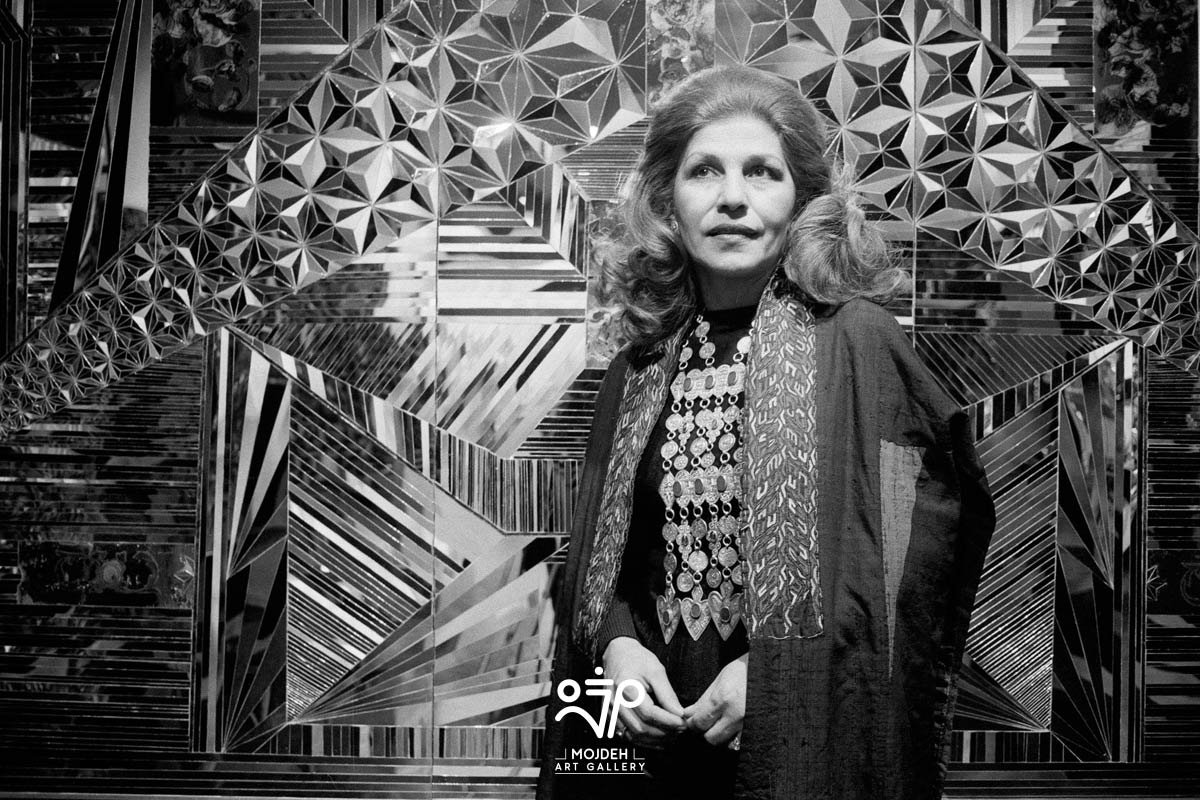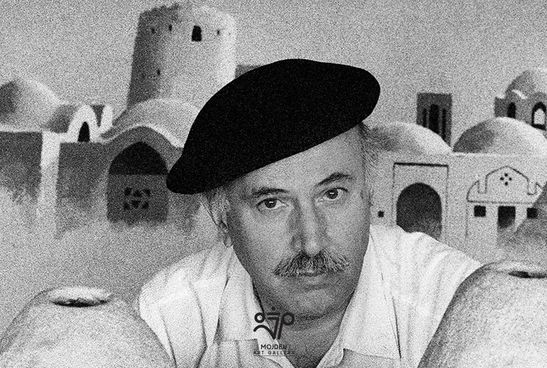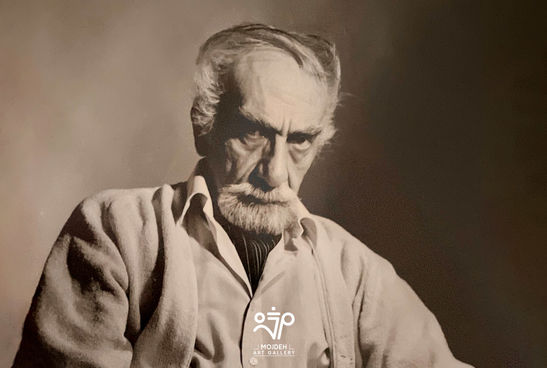Monir Shahroudy Farmanfarmaian

Monir Shahroudy Farmanfarmaian was born in 1923 in Qazvin, Iran. Living in this city until the age of 8 had a profound impact on her artistic future: the city's ancient bazaar, its traditional arts, and the nature and traditional architecture of Qazvin all reflected in her later works, and this cultural and artistic exploitation can be traced in her works. Monir came to Tehran in the middle of the first Pahlavi era and then entered the Tehran School of Fine Arts. During this period, she went to Paris and then in 1945 to New York, where she became involved in the world's modern art scene. She had close friendships with many artists living in New York, and during this period, she also married Manouchehr Yektai, a prominent Iranian painter. Monir returned to Iran in the mid-1960s with a wealth of knowledge of Western culture and modern art, and during this period, like her childhood, she traveled to different parts of Iran and became familiar with traditional Iranian arts, the architecture of mosques and historical buildings, and their designs and patterns, and in fact, she had a kind of research look at this colorful and amazing world. Inspired by this very architecture and mirrorwork of mosques and shrines, Monir embarked on and pursued a vibrant period of artistic activity that continued tirelessly until the last moment of her life. These mirrors, deeply rooted in Iranian architecture and art, with their mathematical and geometric lines, form an inseparable link with modern art. In addition to mirrors, Monir also maintained a lifelong passion for painting and drawing, some of which have been influential in Iranian modern art, demonstrating a contemporary approach to painting. After the Islamic Revolution, Monir moved to the United States, where she continued her artistic activities. Once again, in 2004, as the cultural and artistic atmosphere in Iran became more open compared to when she left, she returned to Iran and continued her artistic endeavors in her own country. The eventful life of this world-renowned and distinguished Iranian artist came to an end in 2019, after tireless and dedicated efforts, and this time, Monir's body returned to Qazvin, her birthplace: the city that was her primary source of inspiration.
Sohrab Ahmadi


